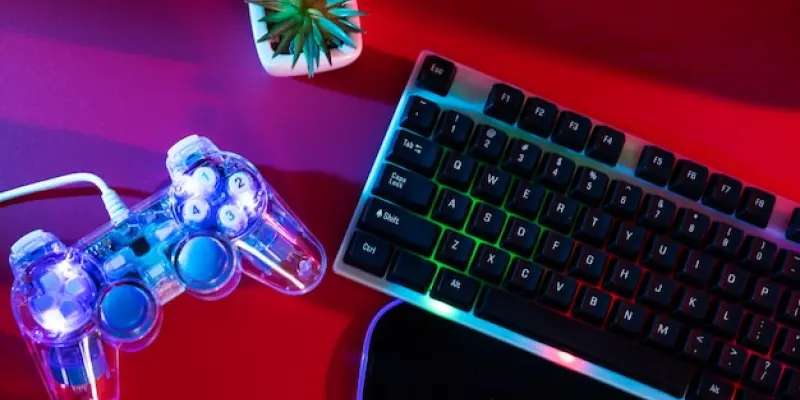In the dynamic landscape of gaming, where visual fidelity and seamless performance are paramount, the debate surrounding VRAM capacity continues to gain momentum. Graphics card manufacturers have come under scrutiny for producing GPUs with 8GB of VRAM, prompting discussions about whether this is sufficient to meet the demands of modern gaming. As graphics technologies evolve rapidly, a comprehensive analysis of the current performance benchmarks and user experiences is crucial to determine if 8GB of VRAM remains viable.
The Basis for 8GB VRAM in Modern Graphics Cards
Appropriateness for 1080p and Esports Titles
AMD’s decision to release an 8GB variant of the Radeon RX 9060 XT reflects a strategic focus on the commonplace 1080p resolution favored by many gamers. According to AMD’s Frank Azor, esports games typically do not demand vast memory resources, making 8GB an attractive option for gamers primarily engaged in this genre. These titles usually emphasize performance over graphical intensity, fitting comfortably within the confines of 8GB VRAM.
In contrast, AAA games, which demand more strenuous processing power and resources, often benefit from larger VRAM capacities. The increased textures and graphical details of these games frequently push the limits of an 8GB system. Stuttering, noticeably reduced frame rates, and occasional game crashes are reported pitfalls when playing modern games with the limited VRAM configuration.
Independent Reviews and User Experiences
To further understand the implications of 8GB VRAM, numerous independent reviews have meticulously evaluated GPUs within this capacity range. While many games remain operational, gamers report encountering hurdles that impact overall performance and fluidity. Various reviews highlight that the notorious one-percent low frame drops often culminate in jarring stuttering or notable lags. Although technically playable, the overall gameplay experience might feel compromised or substandard, especially in complex shadow rendering or detailed architectural accomplishments, where more VRAM would have enabled smoother processing. This trade-off demonstrates a misalignment between the burgeoning expectations from blockbuster AAA game developers and the limited capabilities offered by 8GB VRAM graphics cards. Some utilize upscaling technologies to bypass constraints, seeking performance enhancements to maintain gameplay fluidity. This measure, while a temporary solution, doesn’t completely mask the limitations apparent in high-demand gaming scenarios.
VRAM Needs for Future-Proofing Gaming
The Divergent Role of VRAM in AAA Titles
Graphics card manufacturers like NVIDIA have noted the increased VRAM demands from consumers seeking budget-friendly options that efficiently run graphically intense AAA games. Upscaling technologies such as DLSS and FSR have been developed to independently enhance performance without relying entirely on VRAM, allowing certain games to run efficiently even with lower memory. However, reliance on these technologies doesn’t skirt all problems; an increase in VRAM capacity can circumvent root issues by facilitating smoother transitions and sustained frame rates in memory-heavy tasks.
As the historical context of VRAM development clearly shows, the Radeon RX 480, roughly nine years ago, presented 8GB VRAM at a significantly lower price point, questioning present-day value against seemingly stagnant progression. The memory constraint evidently contrasts against industry expectations, as games imagine complex, immersive worlds demanding finer rendering, vibrant details, and enriched environments. Expected increases in texture quality and resolution over the coming years will likely lead to heightened memory requirements that 8GB VRAM may struggle to accommodate.
Assessing Market Strategy vs. Consumer Expectations
While AMD suggests its 8GB VRAM models primarily serve those focused on esports-centric gaming, anticipation for immersive environments suggests 8GB won’t suffice long term. However, gamers venturing into extensive worlds sporting sophisticated mechanics will unavoidably weigh benefits against constraints as gaming standards climb and technological boundaries expand.
This impending fusion of progressive gaming ambitions and the ascent of VRAM becomes increasingly apparent. New consoles, future releases, and PC builds are adopting higher VRAM as the standard, as developers strive for realism and depth. Embracing this shift, manufacturers need to pivot strategies towards memory-forward developments reflecting emergent ambitions not only for player expectations but for the advancing military of gaming fidelity as a whole.
Navigating the Future of VRAM Capacity
In today’s competitive gaming world, where the need for high-quality visuals and smooth gameplay is crucial, the debate about how much VRAM (Video Random Access Memory) is adequate is heating up. This issue has put the spotlight on graphics card manufacturers who are offering GPUs with just 8GB of VRAM. This amount of memory is leading to ongoing discussions about its sufficiency in catering to the needs of contemporary gaming. With the fast-paced development in graphics technology, it’s essential to thoroughly examine existing performance benchmarks alongside player feedback to gauge whether 8GB of VRAM can still deliver satisfactory gaming experiences. The industry is rapidly changing, making it important to reassess what gamers require in terms of hardware. As newer, more demanding games emerge, they challenge the capabilities of GPUs, and the question remains: Is 8GB of VRAM enough to keep up with these advancements, or do modern titles necessitate a move toward higher VRAM capacities?

